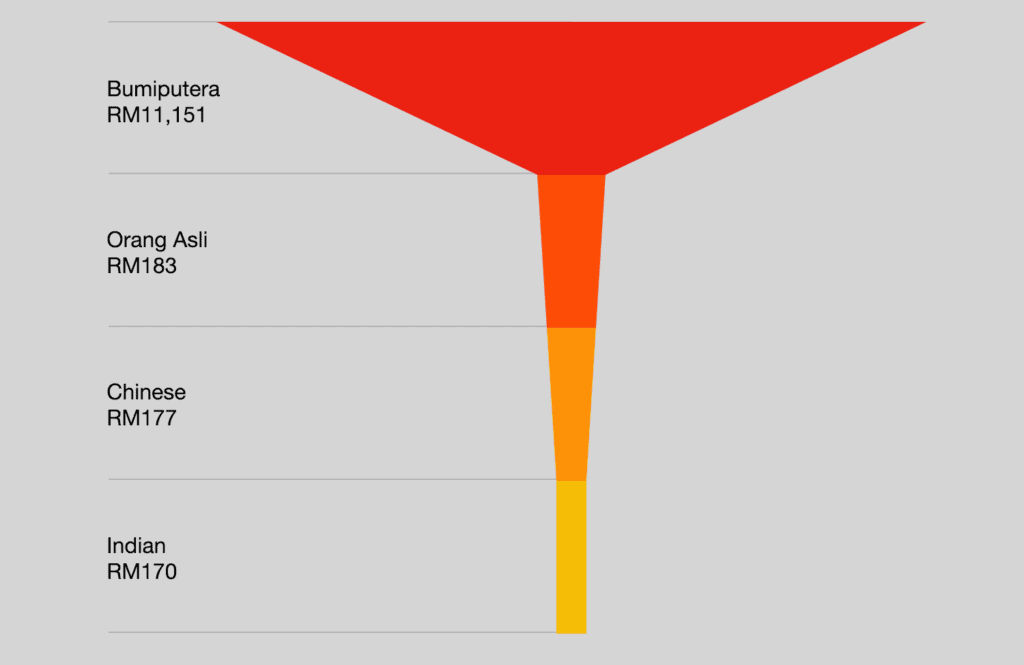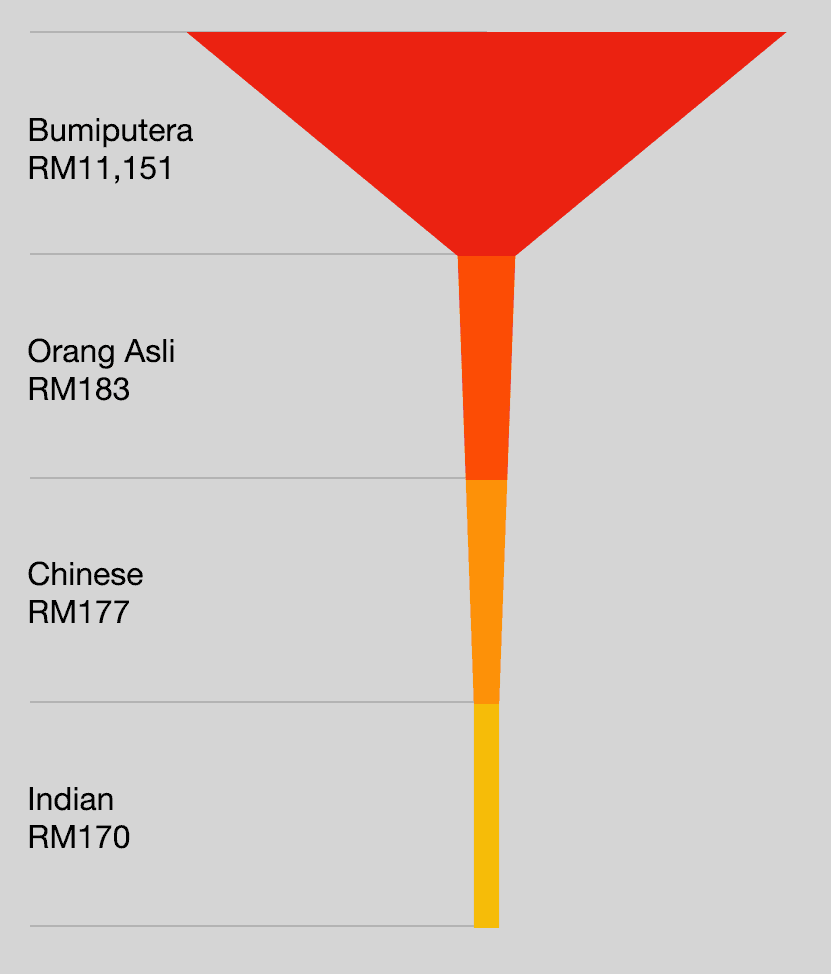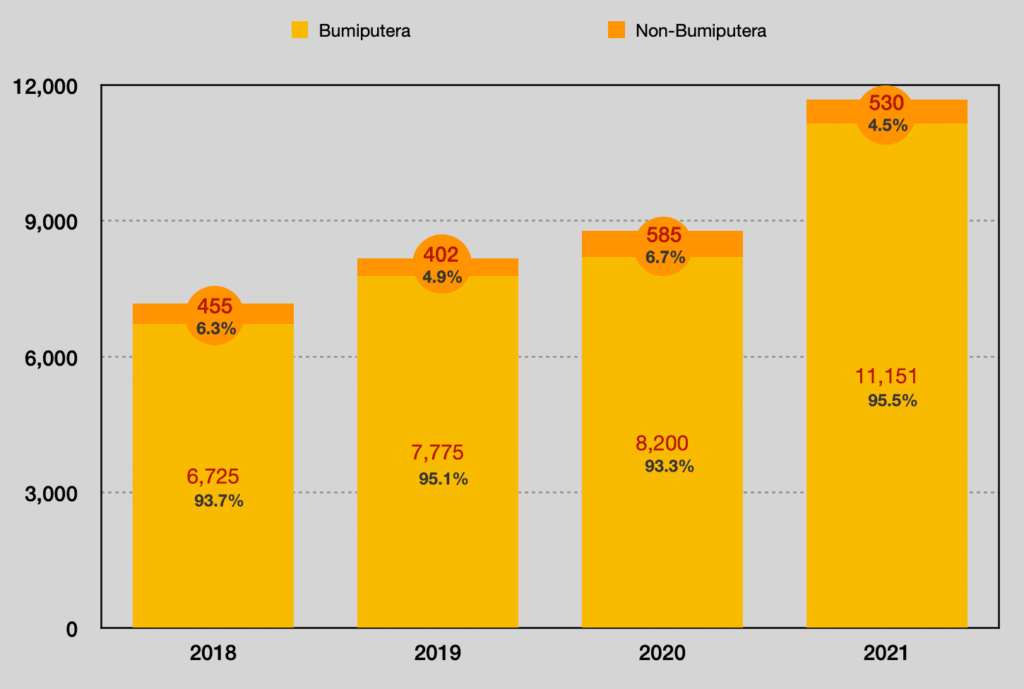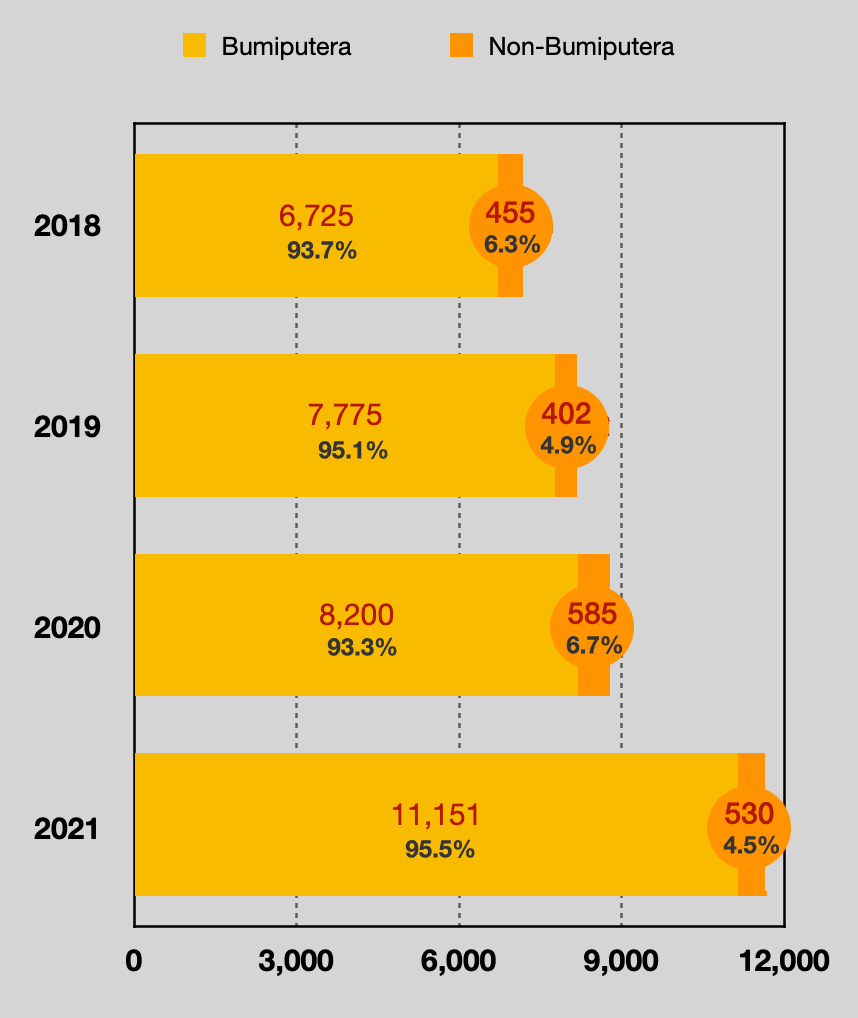The issue of ethnically targeted allocations rears its ugly head every year when the federal budget is tabled. Yet, public perception may not reflect the full reality. Could properly understanding the uneven distribution of the Budget 2021 pie mean a better push for alternative allocations and an end to this cycle of anger?


What's really happening
Can we escape this annual loop of futility? Two steps might help: first, think clearly and coherently about what the government is doing and which groups are the designated beneficiaries; and second, scrutinise ethnically-targeted programmes with precision and propose specific ways of enhancing equity and fairness in the system.
To clearly and coherently grasp policy and public funding for the benefit of ethnic groups, we must be able to distinguish between measures that provide basic needs and help the poor, against those that seek to promote upward mobility and economic participation.”
An extensive range of federal programmes are to be funded to help people receive basic income (such as Bantuan Prihatin cash transfers and minimum wage), primary and secondary schooling, healthcare, and social protection. Covid-19 responses have expanded these or introduced new measures, such as the wage subsidy and loan moratorium. All of the above largely operate on the basis of equality – that Malaysians, regardless of ethnicity, religion, gender or other identifiers, have the right to access these.
Budget allocations are not broken down by ethnicity, and doing so in the annual budget process would not necessarily be practical or constructive. We can take assurance that Bumiputeras and non-Bumiputeras, alike, are being assisted. But we must also be mindful of the purpose of this massive range of assistance to provide basic needs.
This distinction is important, because the programmes that designate Bumiputeras as the predominant or exclusive beneficiary pursue a different set of objectives. This range of policies revolves around promoting the group’s upward mobility and participation in higher socioeconomic levels; chiefly, through higher education and skills development; entrepreneurship; micro, small and medium enterprise (MSME) growth; professional and managerial employment; and wealth ownership. Regardless of one’s agreement – or vehement objection – to these policies, their designated role and scope as well as their location in the budget, must be acknowledged. These programmes are mainly targeted at the aspiring or emergent Bumiputera middle class, not so much the poor.
In other words, enormous chunks for Bumiputera-centric programmes and small morsels for others do not mean the Bumiputera poor are being helped while the non-Bumiputera poor are being ignored.
Now we can delve into some specifics of Budget 2021. The budget speech sets out the agenda and content for debate, and it throws both information and confusion into the mix. Budget speeches have not helped the rakyat understand the scope of public assistance and ethnically-targeted programmes.
This habit of using the finance minister’s pinnacle moment to broadcast the government’s championing of Bumiputera causes, while sprinkling a few assurances for minorities, leads to the false impression that the Bumiputera poor are being helped twenty times more than the non-Bumiputera poor.
What we can say with more certainty is that there is a disparity between the allocations for Bumiputera-targeted programmes and allocations that specify other groups, as summarised in the chart below. Clearly, the system is a deeply embedded one that all ruling coalitions in recent years follow. In fact, the breakdown barely differs between Barisan Nasional (Budget 2018), Pakatan (2019 and 2020) and PN (2021).
At the risk of belabouring the point, I must reiterate the importance of not equating these figures with the amounts of funding for needy Bumiputeras versus needy non-Bumiputeras. The B40 and M40 of all groups substantially benefit through basic assistance in income, health, education and social protection.
Ethnicity-targeted programmes in the Budget speech (RM million; % of total)


Where do we go from here?
By no means is this the end of the story. We just need to spend a bit of time gleaning the speech to arrive at something like the table below.
Again, information from the budget speeches are selective, and inconsistently detailed from year to year. But they are still the best resource we have for this purpose.
Now we can engage in the second crucial step of proper budget scrutiny – to bring specific criticisms on the big differences and offer specific suggestions, beyond general unease with the disproportionality shown in the chart above.
2018
-
Higher education: YPPB2 RM100
-
RM1,825 MSME support, including:
• RM700 Tekun & PUNB
2020
-
Higher education: YPPB2 RM192
-
RM1,825 MSME support, including:
• RM1,000 SJPP3 guarantee & SME Bank
• RM320 Tekun, PUNB, etc4
2021
-
Higher education (MARA, UiTM, etc): Total RM6,500
-
RM4,600 MSME support, including:
• RM2,000 SJPP
• RM1,300 Dana Kemakmuran Bumiputera
• RM510 Tekun & PUNB
2018
-
RM50 food assistance
-
RM60 settlement development
2020
-
RM142 JAKOA & "overall economic development"
2021
-
RM158 "well-being"
2018
-
RM80 SMEs & hawkers
-
RM65 new villages
2020
-
RM85 new villages
2021
-
RM177 "Lump sum payments for education, SMEs, news villages"
2018
-
RM50 Tekun
-
RM50 "community development"
2020
-
RM20 Tekun
-
RM100 MITRA
2021
-
RM20 Tekun
-
RM100 MITRA
Notes: 1 Totals include funding for maintenance and upgrading of schools (MRSM, tahfiz, religious, Chinese and Tamil vernacular schools, etc.), and exclude public procurement; 2 Yayasan Peneraju Pendidikan Bumiputera; 3 Skim Jaminan Pembiayaan Perniagaan, a guarantee scheme for borrowing without collateral, runs programmes for Malaysian SMEs, with some specially designated for Bumiputera SMEs; 4 including SME Bank and Pelaburan Hartanah.
Source: Author’s compilations from Budget speeches.
We can unpack a few points. First, funding for Bumiputera SMEs has been steeply increased, from RM8.2 billion in 2020 to RM11.1 billion in 2021. Specifically, funding for Dana Kemakmuran Bumiputera for SMEs and Skim Jaminan Pembiayaan Perniagaan (a guarantee scheme for non-collateralised loans) surged RM2.3 billion.
In the context of continuing economic uncertainty, a heightened risk environment and Budget 2021’s drastic wage subsidy cuts, it is highly questionable that so much funding should be channeled into SME support.
Second, the microfinance space perhaps presents the clearest case for a rebalance. Tekun was established for low-income Bumiputeras, but subsequently introduced one scheme for low-income Indians. The RM20 million allocated for Indians under Tekun is staggeringly dwarfed by the hundreds of millions availed to Bumiputeras through Tekun, PUNB and other agencies.
Third, a consideration of policy specifics and budget allocations also helps us identify exclusive programmes that can transition to an inclusive composition. The generously funded Yayasan Peneraju Pendidikan Bumiputera (YPPB) stands out. YPPB expressly reaches out to students from disadvantaged backgrounds, providing financial and moral support for technical and vocational education.
While it has started out solely for Bumiputera youth, the case can surely be made for this institution to expand to disadvantaged households of all communities. A Yayasan Peneraju Pendidikan Malaysia would wholesomely follow in the footsteps of Amanah Saham Nasional and Tekun, which over time opened some doors to non-Bumiputeras.
These are just a few examples, but hopefully a foretaste of the possibilities.
In the end, ethnicity and the federal budget need not be an annual cycle of predictable politicking and reflexive reaction.Lee Hwok Aun is a Senior Fellow at the ISEAS-Yusof Ishak Institute in Singapore and author of the recently published Affirmative Action in Malaysia and South Africa: Preference for Parity. His research focuses on affirmative action, discrimination, inequality, social protection, labour and education.
Thank you for reading!
Your support has been keeping us going. As you know, Between The Lines is the work of a small team of passionate journalists. We believe in the work we do and the service we provide, and we hope you see the value in what we offer you.
If you do, we’d like to ask a couple of favours:
– If you haven’t done so yet, we’d love it if you signed up for our newsletter subscription. The first month is free anyway, so what do you have to lose? 🙂
– If you think this piece we sent you today is good, share it with your friends, messaging groups and social platforms.
Have a lovely day and see you in your inbox tomorrow!







